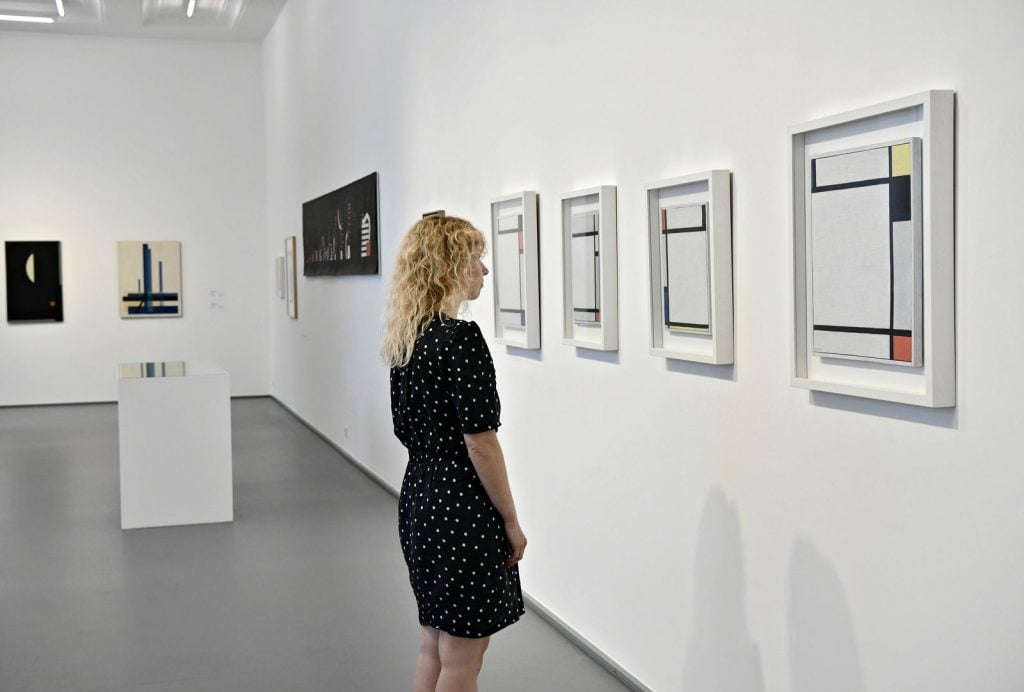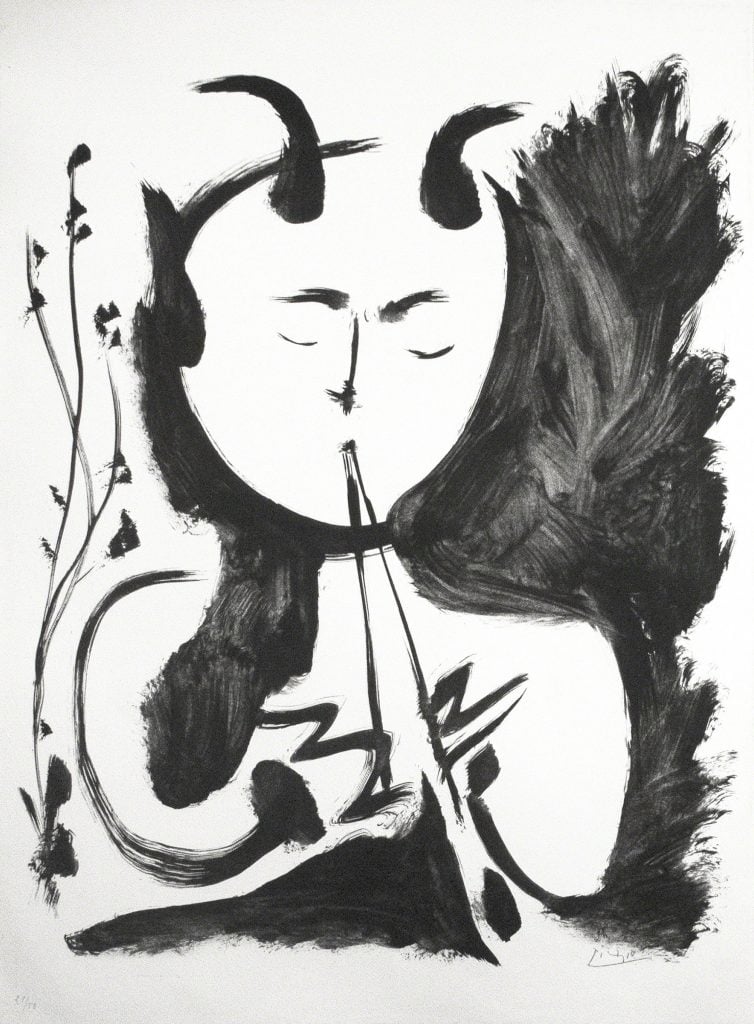Law & Politics
Piet Mondrian’s Heirs Are Suing a German Museum for the Return of Four Paintings Worth Over $200 Million
The paintings were loaned to the Kunstmuseen Krefeld in 1929 and allegedly never returned.

The paintings were loaned to the Kunstmuseen Krefeld in 1929 and allegedly never returned.

The heirs of Piet Mondrian have filed a lawsuit in a US district court seeking the return of a quartet of paintings by the Dutch artist— reportedly valued at over $200 million—from the Kunstmuseen Krefeld in Germany.
The lawsuit is also seeking damages for an additional four Mondrian paintings that are no longer in the museum’s possession, having likely been exchanged for other artworks, or sold to fund acquisitions, in the 1950s. The works all feature Mondrian’s distinctive neo-plasticist style, characterized by intersecting black lines forming blocks of primary colors on a white background.
The case is being brought by the trustees of the Elizabeth McManus Holtzman Irrevocable Trust—the children of Elizabeth McManus Holtzman and American abstract artist Harry Holtzman, who helped Mondrian flee Nazi persecution in 1940, and later became the executor of his estate and sole heirs.
The lawsuit alleges that Mondrian loaned the Kaiser Wilhelm Museum—an institution that’s part of the Kunstmuseen Krefeld—eight paintings in 1929 for the planned exhibition “Circle International. Painting and Sculpture.” But the museum director, Max Creutz, died before the show came to fruition.

Piet Mondrian, Tableau No. VII (1925). Courtesy of Kunstmuseen Krefeld, via Wikimedia Commons.
The loan included Tableau No. VII (1925), Tableau No. X (1925), Tableau No. XI (1922) and Komposition IV (1926), all currently in the museum’s collection.
When the Nazis came to power in 1933, they deemed Mondrian a degenerate artist. The party installed a new director at the Kaiser Wilhelm Museum, making it impossible for Mondrian to secure the works’ return. Fortunately, because the works were not in the museum’s official inventory, the new leadership remained unaware of their existence and they were not directly seized by the Nazis.
Mondrian died in New York in 1944, assuming that the paintings were lost to him.
According to the lawsuit, the Kaiser Wilhelm Museum rediscovered Mondrian’s paintings in storage in 1947, but failed to notify the artist’s heirs. (The director at the time, Paul Wember, said they were found under “mysterious circumstances.”)
Instead, the museum sold four of the works to purchase another 30 works, mainly lithographs, by artists including Pablo Picasso, Henri Matisse, Marc Chagall, Georges Braque, and Paul Klee. The other four paintings first appear in museum inventories in 1954.

Pablo Picasso, Faun Musician no. 4 (1948), one of the works believed to have been purchased by the Kunstmuseen Krefeld with the proceeds of the sale of four Piet Mondrian canvases on loan from the artist. Courtesy of RS Johnson Fine Art.
The trust first learned that the Kunstmuseen owned four Mondrian works in 2011, and hired provenance expert Monika Tatzkow and German lawyer Gunnar Schnabel to investigate. In 2017, the researchers determined that that the museum was in wrongful possession of works originally loaned to it by the artist.
In response, the trust contacted the city of Krefeld, asking for restitution. Authorities refused, releasing a report finding that the paintings had been rightfully acquired. The city claimed the four canvases in the museum’s collection were acquired privately by Creutz, the last director before the Nazis came into power, and were then donated to the city. The report also maintained that too much time had elapsed for the trust to press its claim.
The lawsuit cites the Holocaust Expropriated Art Recovery Act, which eliminates statutes of limitation for Holocaust-era art losses should the plaintiff take legal action within six years of learning of an artwork’s whereabouts.
One of the trustees bringing the lawsuit, Madalena McManus Holtzman, said in an email to Artnet News that she “is very pleased that we are now on the road to recovering Mondrian’s important paintings for the Trustees, as Mondrian would have wanted.”
The museum declined to comment, saying it had not yet received a copy of the complaint.